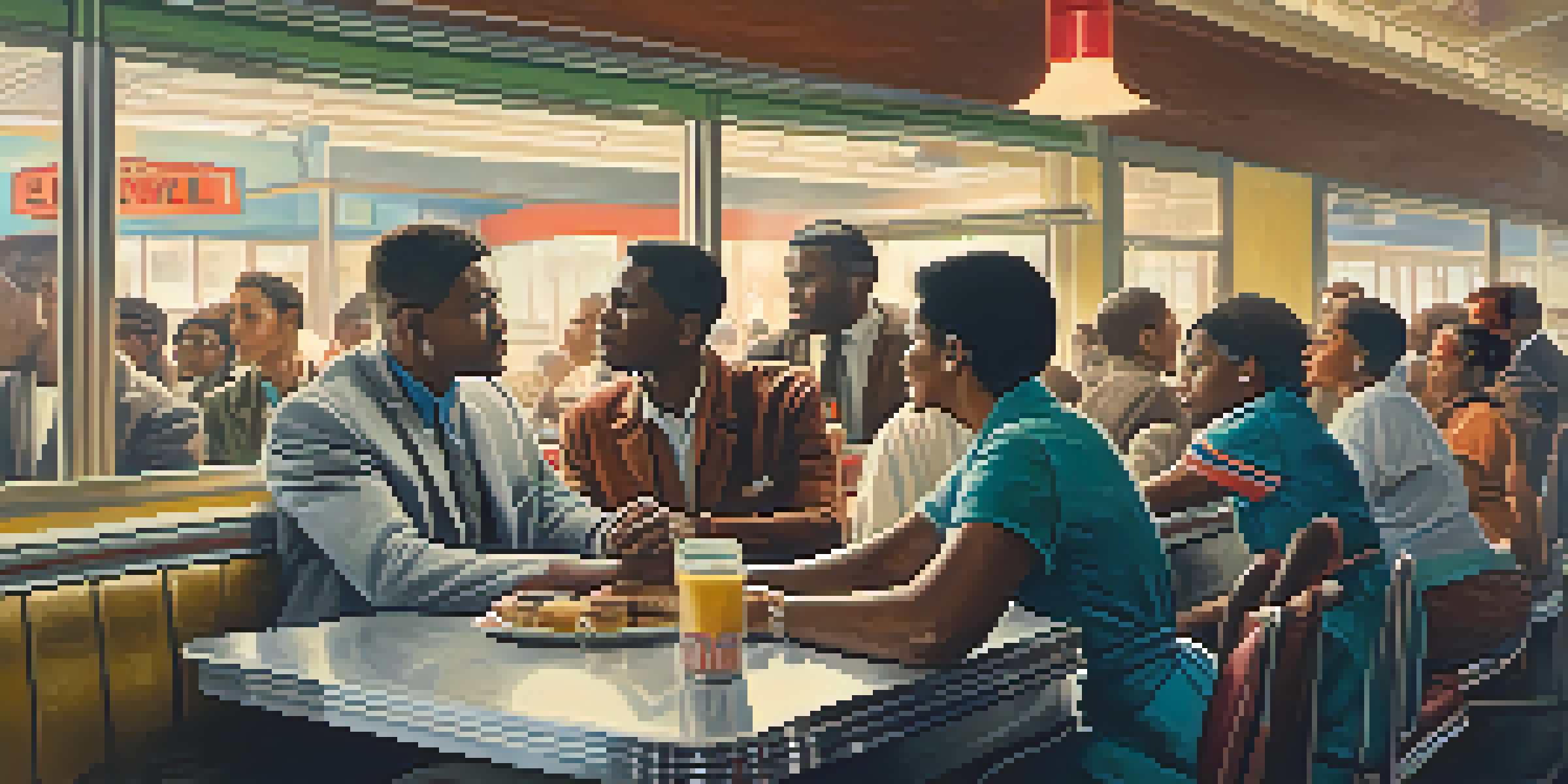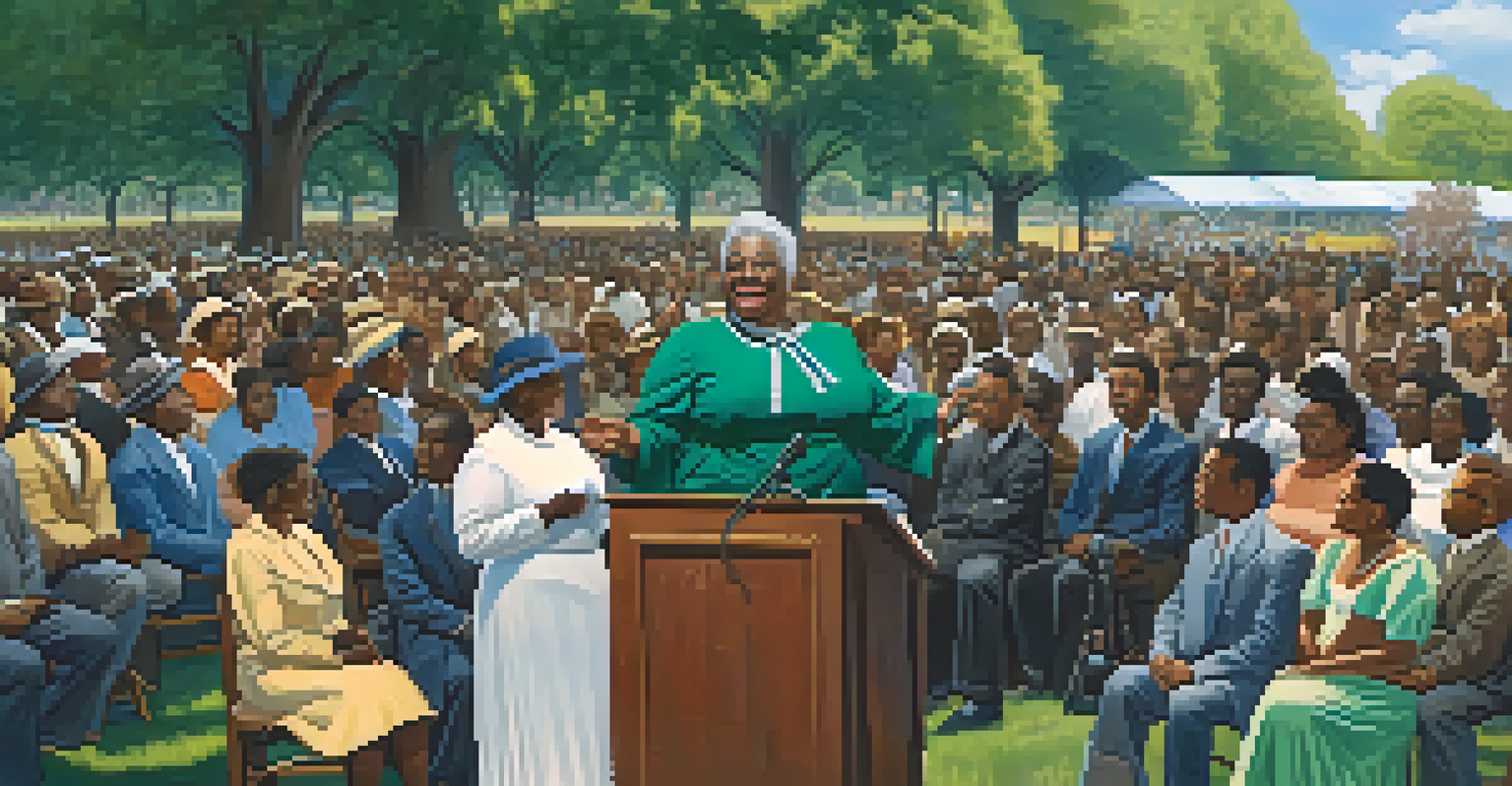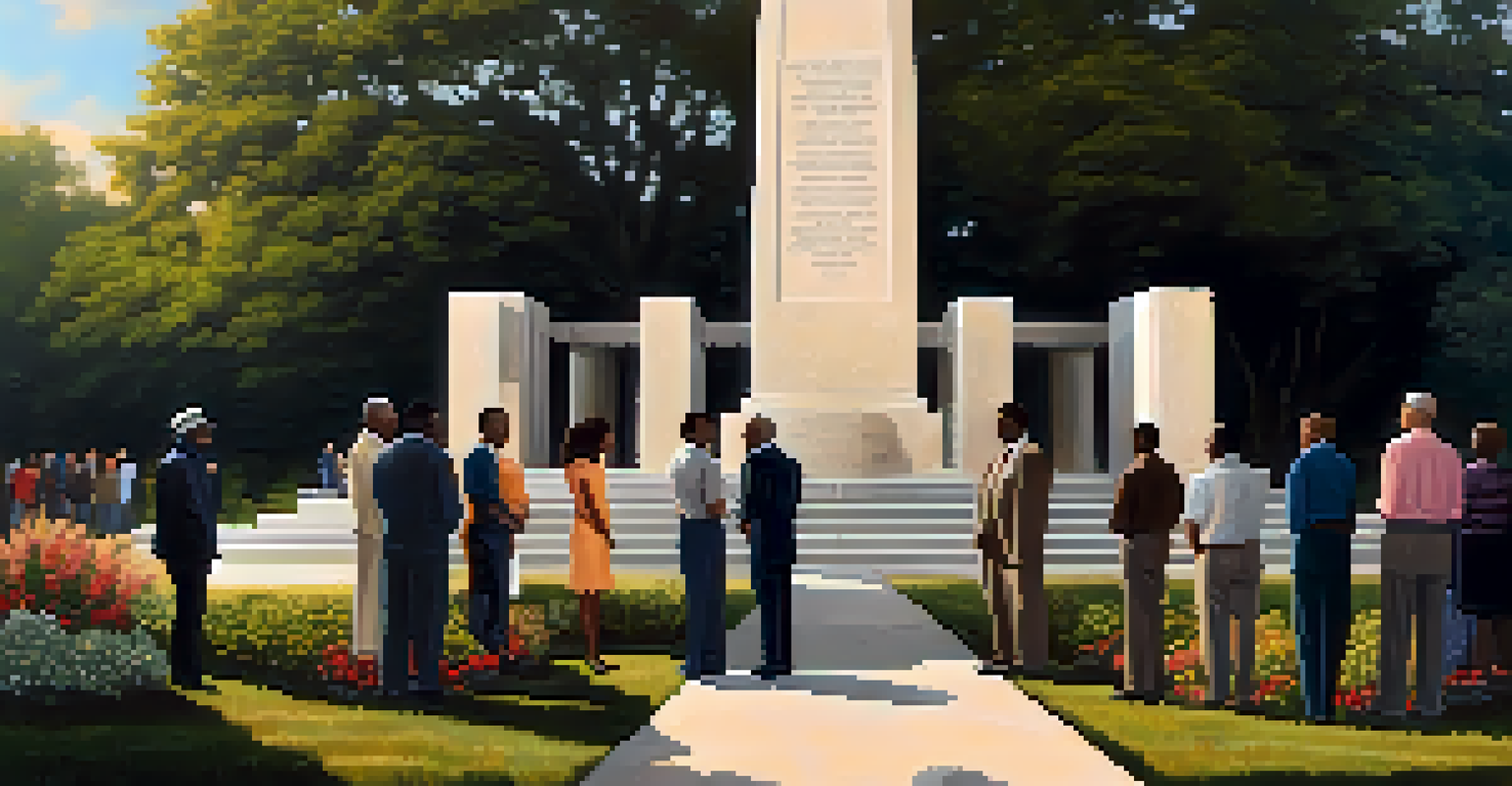Civil Rights Movement in Florida: Key Events and Figures

The Early Struggles for Civil Rights in Florida
Florida's journey toward civil rights began long before the 1960s, with early activists laying a foundation for change. Key figures like Harry T. Moore, a teacher and civil rights leader, worked tirelessly to challenge racial injustices as early as the 1940s. Moore's efforts, unfortunately, came at a high cost; he lost his life in a tragic bombing in 1951, which only fueled the determination of other activists.
Injustice anywhere is a threat to justice everywhere.
The state faced a unique set of challenges, including segregation laws that were deeply entrenched in society. The combination of grassroots organizing and national attention brought issues of race to the forefront, highlighting the urgent need for reform. It was in this atmosphere of tension and determination that the Civil Rights Movement truly began to take shape in Florida.
As the movement gained momentum, the groundwork laid by early activists inspired many to join the fight. This initial phase set the stage for significant developments in the 1960s, drawing attention to the struggle for equality and justice across the state.
The Impact of the Sit-in Movement in Florida
In the early 1960s, sit-in protests became a powerful tool for civil rights activists in Florida. Inspired by similar actions across the nation, students from institutions like Florida A&M University organized sit-ins at segregated lunch counters, demanding equal service. These nonviolent protests garnered significant media attention, shining a spotlight on the injustices faced by African Americans in the state.

The sit-in movement not only challenged segregation but also fostered a sense of solidarity among participants. Many young activists learned the importance of collective action and nonviolent resistance, principles that would guide their efforts in the years to come. The courage displayed during these protests inspired others to join the movement, expanding its reach across Florida.
Early Activism Laid Foundation
Pioneers like Harry T. Moore set the stage for Florida's Civil Rights Movement by challenging racial injustices long before the 1960s.
Through persistence and community support, the sit-ins eventually led to desegregation in several key locations. This marked a significant victory for the movement and demonstrated the effectiveness of grassroots organizing in the fight for civil rights.
The Role of the NAACP in Florida's Civil Rights Movement
The National Association for the Advancement of Colored People (NAACP) played a crucial role in Florida's Civil Rights Movement. With branches established throughout the state, the NAACP worked diligently to combat discrimination and promote voter registration. Their efforts were vital in mobilizing communities and advocating for legislative changes to ensure civil rights for all citizens.
The time is always right to do what is right.
One of the NAACP's key initiatives was the push for equitable education. Activists fought against the funding disparities between white and black schools, striving for equal opportunities for all students. Their relentless advocacy led to significant legal battles that challenged the status quo, ultimately paving the way for educational reforms.
The NAACP's commitment to civil rights extended beyond education, as they also focused on issues like housing and employment discrimination. Their multifaceted approach helped to bring about systemic changes, making them an essential player in Florida's civil rights landscape.
The March on Washington and Florida's Representation
The historic March on Washington in 1963 was a pivotal moment in the Civil Rights Movement, and Florida was well represented. Activists from across the state, including notable figures such as Dr. A. Philip Randolph, participated in this monumental event. The march not only called for civil and economic rights for African Americans but also united diverse voices advocating for justice.
Florida's representation at the march highlighted the state's commitment to the movement, showcasing a diverse coalition of activists. This event served as a catalyst for heightened awareness and engagement back home, inspiring many to join local efforts for change. The powerful speeches and messages shared at the march resonated deeply with Floridians, igniting a renewed passion for activism.
Sit-ins Sparked Collective Action
The sit-in protests in the early 1960s mobilized students and highlighted the fight against segregation, showcasing the power of nonviolent resistance.
The impact of the March on Washington extended beyond the event itself, as it helped to galvanize support for the Civil Rights Act of 1964. This landmark legislation would transform the landscape of civil rights, ensuring that the struggles faced by so many would not be in vain.
The Formation of the Florida Civil Rights Coalition
In the wake of increased activism, the Florida Civil Rights Coalition was formed to unify various organizations and efforts across the state. This coalition aimed to streamline the fight for civil rights and create a more coordinated approach to addressing the myriad issues affecting African Americans. By bringing together different voices and perspectives, the coalition strengthened the overall impact of the movement.
The coalition focused on key areas such as voter registration, fair housing, and employment opportunities. Through community engagement and outreach, they worked to educate citizens about their rights and the importance of civic participation. This grassroots approach fostered a sense of empowerment, encouraging individuals to take action in their own communities.
By collaborating with established organizations like the NAACP and the Southern Christian Leadership Conference (SCLC), the coalition amplified its message and broadened its reach. This united front was instrumental in pushing for legislative changes and addressing systemic injustices in Florida.
Key Figures: Dr. Mary McLeod Bethune and Her Legacy
One of the most influential figures in Florida's Civil Rights Movement was Dr. Mary McLeod Bethune, an educator and activist. As the founder of the National Council of Negro Women, she dedicated her life to advocating for educational opportunities and civil rights for African Americans. Her legacy continues to inspire generations of activists and leaders across the nation.
Bethune's work extended beyond education; she played a pivotal role in fostering community engagement and political awareness among African Americans. She understood the importance of empowerment and encouraged others to take an active role in advocating for their rights. Her commitment to social justice laid the groundwork for future movements in Florida and beyond.
NAACP's Role in Advocacy
The NAACP was instrumental in mobilizing communities and advocating for legislative changes to combat discrimination and promote civil rights in Florida.
Today, Dr. Bethune's contributions are honored through various institutions and memorials, reminding us of the power of perseverance and advocacy. Her life and work serve as a testament to the impact one individual can have in the fight for equality and justice.
The Legacy of the Civil Rights Movement in Florida
The Civil Rights Movement in Florida left an indelible mark on the state's history and continues to influence contemporary activism. The efforts of countless individuals and organizations paved the way for significant legislative changes, including the desegregation of schools and public facilities. This legacy serves as a reminder of the power of collective action in creating a more just society.
Moreover, the movement inspired future generations to carry the torch of activism, addressing ongoing issues of inequality and injustice. Modern movements, such as Black Lives Matter, draw upon the lessons learned from the struggles of the past, highlighting the importance of community organizing and advocacy. The spirit of resilience and determination remains strong in Florida's fight for civil rights.

As we reflect on the history of the Civil Rights Movement in Florida, it is crucial to honor the sacrifices made by those who fought for equality. Their stories and achievements continue to resonate, reminding us that the struggle for justice is ongoing and requires our active participation.